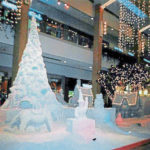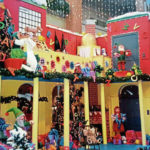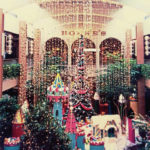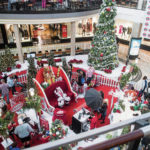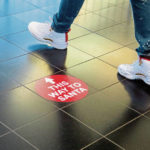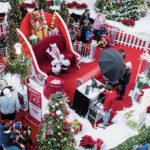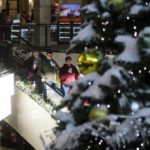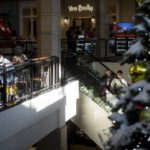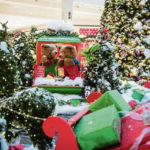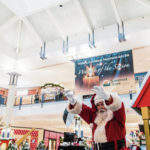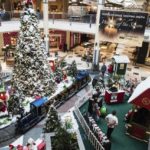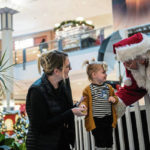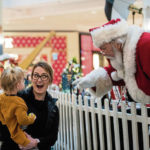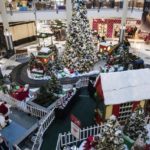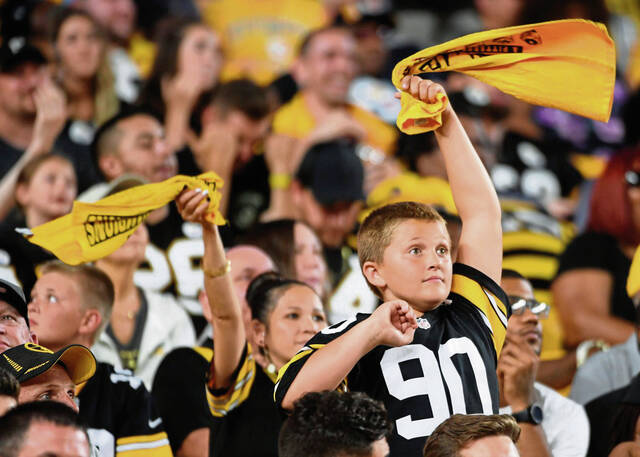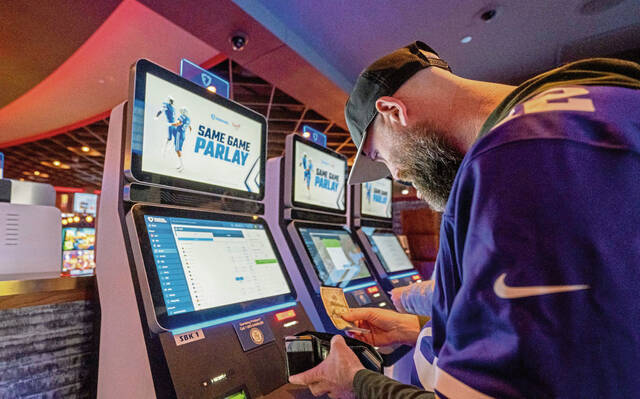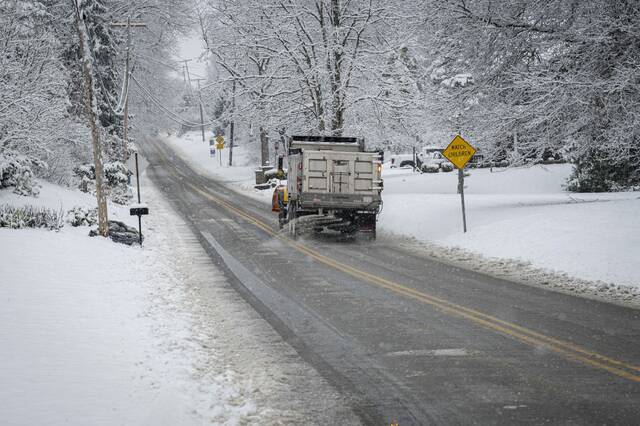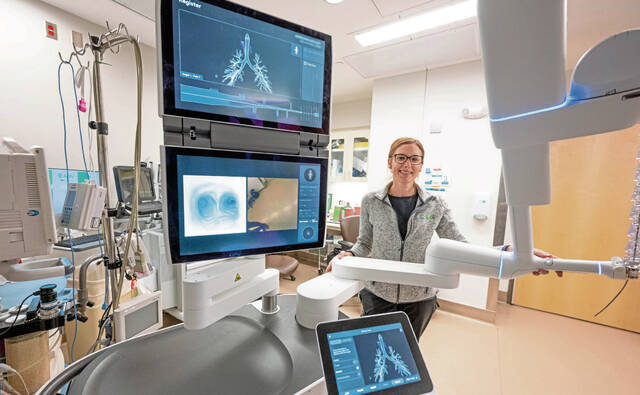When Debi Hall’s daughter, Kelly, saw the Christmas decorations at the former Greengate Mall in Hempfield years ago, she thought she was at the North Pole.
Each year, the mall was decorated with a towering Christmas tree set up near the Lazarus department store, curtains of string lights flowing from the ceiling. Blankets of white, fluffy snow surrounded sleighs filled with colorful presents, ribbons and tinsel making the scene sparkle, Hall recalled. The mall shuttered in 2001 after Westmoreland Mall opened five miles down the road in 1977.
“Greengate was the master,” said Hall of Connellsville. “Rides for the kids, people dressed as holiday characters laughing along with us. … Everyone you met, customers and employees alike, all had a holiday spirit and helped make it so magical.”
A Christmas boom at shopping malls took off in the 1960s, piggybacking off the once-popular window displays at downtown department stores — a former Pittsburgh tradition that ended when Macy’s closed its Downtown location in 2015, making way for a new hotel and high-end apartments.
But the mechanics of the window displays — such as moving characters, elaborate snow scenes depicting popular children’s characters and cozy fireside displays — soon moved over to the malls, which made the scenes bigger because of the additional space, according to Leslie Przybylek, senior curator at the Heinz History Center in Pittsburgh’s Strip District.
“By the ’70s, with the growth of the suburbs, the malls really are the primary shopping area for most people. … And so in some way, like with many things, the malls build off some of the Christmas traditions that had become solidified with the department stores,” Przybylek said. “And then the nature of the decorations changed because the nature of the shopping mall is different.”
What once was mostly confined to a panel of windows expanded to several thousand-square-foot shopping malls, making room for train rides and elaborate Christmas trees, all leading to pictures with Santa. Store decorations mimicked the mall’s theme for the year, an additional way to draw in shoppers — the overarching reason for the decorations.
“Whether it was a beautiful window wonderland or you’re riding the train in the mall. … Either way, it’s encouraging you to take the effort to go there and spend time there,” Przybylek said.
Still, family traditions and rituals soon centered around the practice, depicted in popular holiday movies such as “National Lampoon’s Christmas Vacation” and “A Christmas Story.” Memories of those shopping trips and telling Santa want they want for Christmas trigger feelings of nostalgia, said Dana Winters, director of Simple Interactions and academic programming at the Fred Rogers Center at Saint Vincent College in Unity.
“When you ask children about their memories of holidays, it’s around something that’s a ritual or family based,” Winters said. “Visiting Santa at the mall or the train, that ritual is a huge part of the nostalgia and that’s the tradition that holds in children’s memories.”
Decline of the mall
Officials at Westmoreland Mall rang in the 2019 holiday season with their annual light-up night parade, led by the Hempfield Area Marching Band, in early November. During the first week of December, people milled around with a short line waiting to meet Santa. Parents watched as their kids rode the train, taking pictures and waving as they went by. Decorations were mostly confined to the center court, garland hanging from hallway ceilings.
For Randie Baker-Wilson, a worker at Christmas Town, an ornament shop that operates out of two kiosks and fills the former Gymboree storefront, decorations at the store started to decline after mall officials scaled back the size of the train and the Christmas tree.
“(The decorations) are getting worse, and I kind of miss it,” she said. “This Santa, he’s putting a little (magic) back, so maybe they’ll go back to Greengate Mall days, but it’s gone downhill.”
Shopping malls have been victim of what is known as the retail apocalypse, causing vacancies and mall closures across the country. At the end of 2018, the vacancy rate at regional malls was about 9%, according to Reis, a real estate research firm.
Westmoreland Mall, which had an 8% vacancy rate in 2017, has seen the number of storefronts dwindle over the past few years, starting with Bon-Ton, which closed its doors last August. Since then, the mall has had numerous closures, including Sears, which closed March 17; Charlotte Russe; Helzberg Diamonds, which closed March 24; Gymboree; Payless ShoeSource and Dressbarn. Verizon Wireless and Sleep Number were added to that list in July, followed by New York & Company, which will close by the end of the year.
Lisa Earl, manager of Ross Park Mall, declined to comment on the mall’s vacancy rate.
Shoppers seem to be reflecting those numbers. Out of the predicted 86% of people who will choose to shop at a mall or shopping center this holiday season, 50% went to a department store, 36% to clothing stores and 32% to electronics stores during Thanksgiving and Black Friday, according to Stephanie Cegielski, spokeswoman for the International Council of Shopping Centers.
Still, those shoppers will spend 4% more than last year, according to the National Retail Federation, or between $727 billion and $730 billion. That’s an average of almost $1,050 per person.
“I used to work (at Westmoreland Mall) in college. I worked for the accounting center at Sears, so it’s changed a lot,” said Donna Sunseri of Greensburg, who was shopping at Westmoreland Mall with her 7-year-old son, Dominic, the first week of December. “Of course, the mall was full and vibrant whenever I was in college, and now look at it. You’re missing your anchor stores, most of the stores are closing and, of course, a lot of us do it online. But, still, there’s something nice about coming — the music, the food. Especially around Christmastime.”
Westmoreland Mall officials have said options to fill empty spaces at the facility include nonretail and dining options, a move that malls across the country are making. A $150 million mini casino dubbed Live! Casino Pittsburgh is slated for the former Bon-Ton space, expected to open next year.
While some area malls seem to be thriving, others, like Pittsburgh Mills in Frazer, are taking a similar turn to Westmoreland, filling their storefronts with an escape room, a church and an insurance agency, seemingly trying to avoid a fate similar to Century III Mall in Allegheny County’s South Hills, which permanently closed in February.
Maintaining holiday spirit
For Baker-Wilson, however, stores like hers and Hickory Farms, which has temporarily taken over the former Helzberg Diamond space, help draw in holiday crowds and make the mall look full.
“It’s, I’d say, 75% more than what’s in the mall on a average summer day,” she said. “So, it’s good for the mall. … I think it’s good for the shoppers to have these little places. The mall looks a lot better when it’s full than not.”
At Ross Park Mall it’s a different story, Earl said, adding that the mall has maintained strong anchor stores, including Nordstrom, Macy’s and L.L. Bean.
Focused around the mall’s center court, Santa is surrounded by a large tree, a train — its first year back since it was removed in 2013 — and an LED ornament Earl refers to as a “selfie station.”
“I think that this new decor package made a huge impact compared to the one that we had in the past,” she said. “In the past, it was a little bit old and dated, and we tried to spruce it up every year. But this investment that we made, it’s really a pretty package, and it makes a good visual impression as you’re walking through the mall.”
Despite their efforts, Sunseri, 50, said her family only treks to the mall twice during the Christmas season. She said constant access to material items and Christmas becoming more of a holiday than a holy day has taken the magic out of the season.
“It wasn’t a materialistic culture, so when you got the Sears catalog or the JCPenney catalog and all the Christmas stuff was in it … we would start in September going through those catalogs and writing our lists and rewriting our lists because we didn’t see stuff like that,” she said. “Now it’s everyday, all the time. So that has kind of drowned out that special magic. Every day is Christmas today. If you want it, you go buy it.”
For Baker-Wilson, however, the magic is there in Christmas ornaments. Working at the mall intermittently for 22 years, she said she has seen kids grow up and come back to purchase engagement ornaments followed by marriage and baby ones.
“It’s a little niche that everybody comes back to,” she said.























